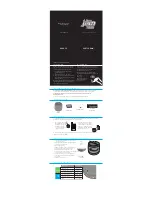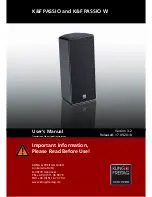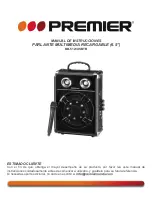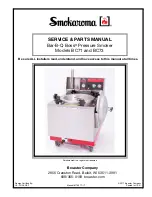
9
Radio Frequency Interference:
This device has not been tested for and is not intended for use on airplanes,
in hazardous environments, in healthcare facilities, or where cellular phones or
other intentional transmitters are restricted.
WARNING -
Avoid placing the X10DR UHF Radio Speaker Mic next to an implanted
electronic device (e.g., don’t carry the device in a shirt or jacket pocket directly
near an implanted device). Wear the X10DR UHF Radio Speaker Mic on the
shoulder opposite the pacemaker to minimize the potential for interference. If
you have any reason to suspect that interference is taking place, turn the device
off immediately.
WARNING -
Exposure to loud sounds may result in noise induced hearing loss (NIHL):
NIHL can be caused by a one-time exposure to an intense sound such as an
explosion, or by continuous exposure to loud sounds over an extended period
of time. Workers exposed to hazardous noise may also experience tinnitus,
which could become permanent. NIHL is irreversible but completely
preventable. If you experience discomfort or ringing in your ears, consult a
medical practitioner.
Safe Work Australia in the Work Health and Safety Regulations 2011
determined the noise exposure standard to be 85dB(A) averaged over a time
period not exceeding 8 (eight) hours or 140dB(C) as the peak limit.
The X10DR UHF Radio Speaker Mic has the option of 8 volume levels. When
set at level 8, the communicator emits approximately 96dB at a distance of 10
cm from the front surface of the speaker, exposing wearers to loud sounds. It
is therefore recommended that the volume is set and maintained at the lowest
level, practical; preferably below level 4. If the ambient noise requires the use
of volumes above level 4, it is recommended that 3M Peltor Noise Attenuating
Headsets with sound limiters be used in combination with X10DR UHF Group
Communicator. It may also be worth considering an alternate means of radio
communications,
HEADSET USE






























